
The Hydor Koralia G3 is a fantastic movement pump: 5,000 l/h flow rate, environmentally friendly with only 3 watts of power consumption, and ultra quiet. What more could you ask for?
We were able to test this pump in our nanoreef aquarium and measure its characteristics. Both situations convinced us, with a bonus that we will discuss later in the article and in our video. So the only thing left to do now is help you get to know it better.
The Hydor Koralia is a movement pump that has come a long way, and is now in its third declination, hence the name G3. The pump exists in three power variants, 5,000 l/h, 7,000 l/h, and 9,000 l/h. We chose the 5,000 l/h version because it was the one that best suited our aquarium.
Technical Specifications Hydor Koralia G3 Motion Pump
| Maximum Flow Rate | watt | l/h x watt | Dimension | Recommended freshwater Aquarium | Recommended marine Aquarium | |
| Koralia G3 5000 | 5.000 l/h | 3,5 w | 1.428 | diameter 7,7 cm x 10,2 cm | 300-600 l | 200-330 l |
| Koralia G3 7000 | 7.000 l/h | 4,5 w | 1.555 | diameter 7,7 cm x 10,2 cm | 400-800 l | 280-450 l |
| Koralia G3 9000 | 9.000 l/h | 6,3 w | 1.429 | diameter 7,7 cm x 10,2 cm | 500-1000 l | 360-600 l |
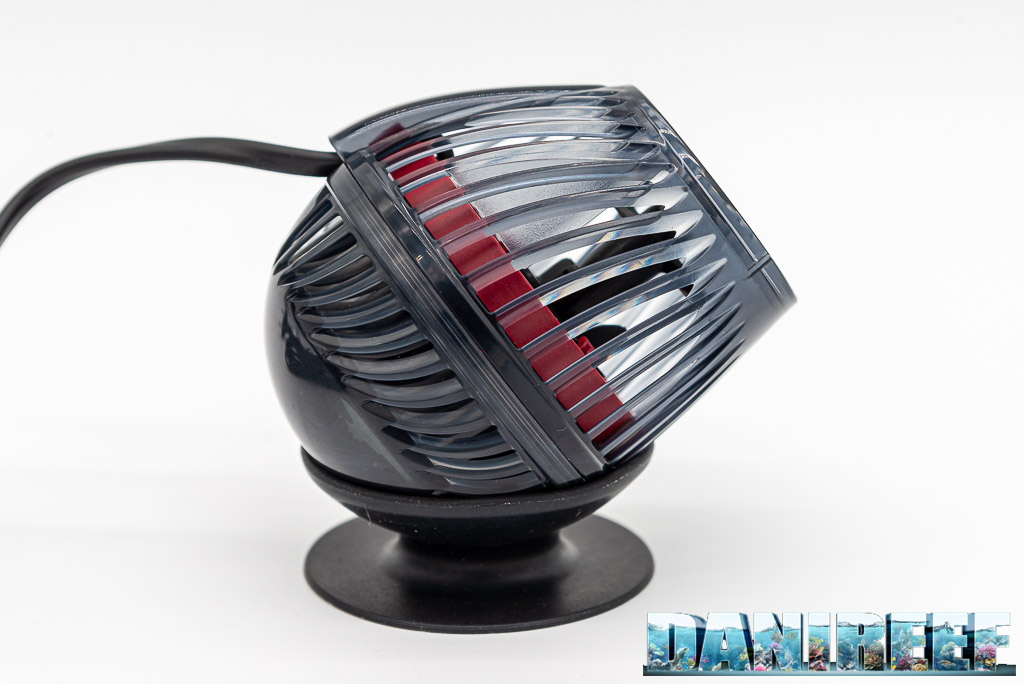
The Hydor Koralia G3 motion pump video review
Before we get into the technical aspects of our review, we’d like to share the video review we made. This will give you the choice of watching the video or reading the article. The two are complementary, so to get a 360-degree view of what we think of this pump it would be great to read the whole article, which has more technical issues, and watch the video. In any case, enlarge the video and enjoy it in 4k! The video is in Italian but you can activate subtitles.
As we have seen, the pump is given a flow rate of 5,000 l/h with a consumption of only 3.5 watts. This means that each watt will push about 1,500 l/h, a very good value.
Diffusers
The pump package includes the pump itself and as many as 3 diffusers that are used to expand the flow or to prevent fish and animals in the aquarium from coming into contact with the pump propeller. The spectacular thing, which is the first time I have found in a pump, is that Hydor has indicated the flow rate for each of its 3 diffusers! It is obvious that by interposing something in front of the free flow this would be reduced. But it is spectacular to know by how much! I would also like all the other companies to indicate their flow loss.
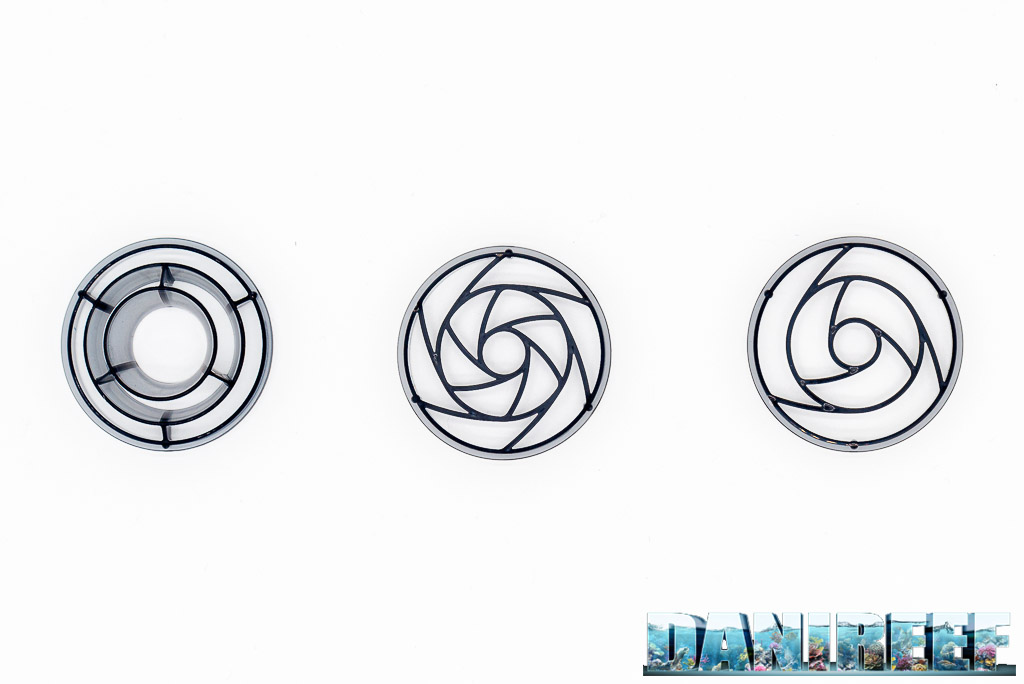
In the table below we see the flow rate values. The flow of the pump without any diffuser in front is 5,000 l/h. Then depending on the diffuser mounted it goes from 3,500 l/h to 3,700 l/h to 4,000 l/h. In our nanoreef, we chose to mount the diffuser that decreases the flow rate to 3,700 l/h.
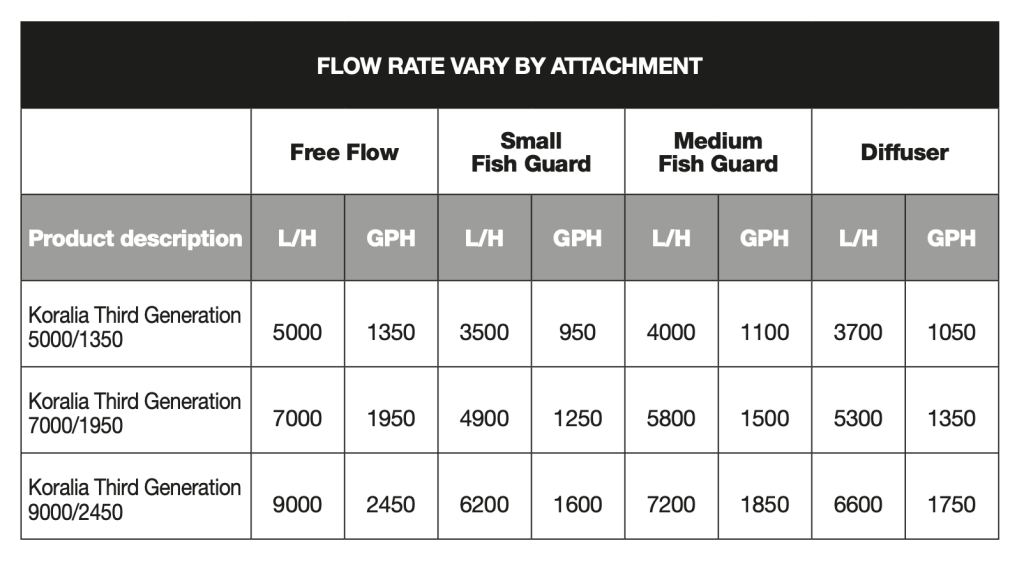
Why we trust Hydor’s indicated flow rate today – bonus
As I mentioned in the opening of the article, there is a bonus. We all know how difficult it is to measure the flow rate of a recirculating pump. When we’re talking about a return pump, it’s a rather simple operation, because all you have to do is to buy a flow meter, such as our DigiSavant DIGIFLOW 6710M, which plugs into the outlet pipe and, beyond losses and friction, you’re done.
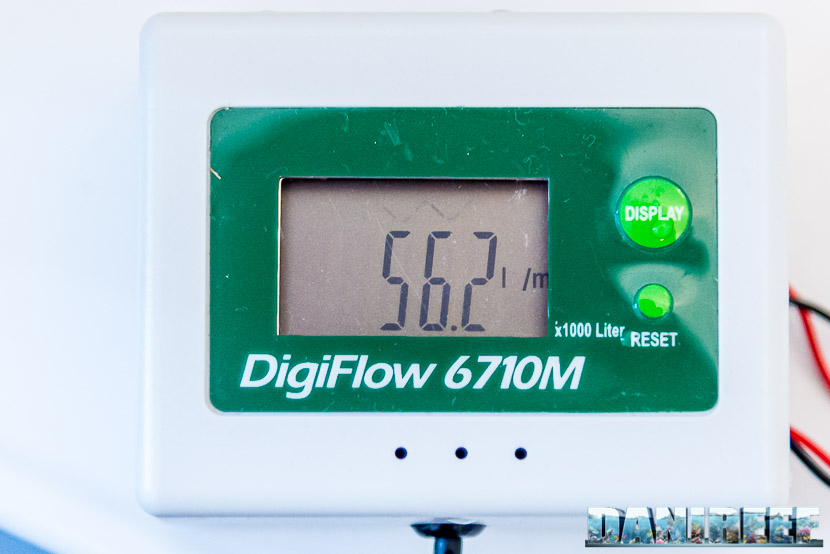
For a movement pump, the issue becomes more complicated. Each company has, over time, undertaken a different mode of measurement. Going back to 2011, there were ways of calculating flow rate by some companies that were described as outlandish by other companies, such as putting a plastic bag in front of the pump and measuring its filling time. That’s why years ago research was done, in collaboration with Penn State University and sponsored by Ecotech Marine, that scientifically measured the flow rate of all the 2011 recirculating pumps.
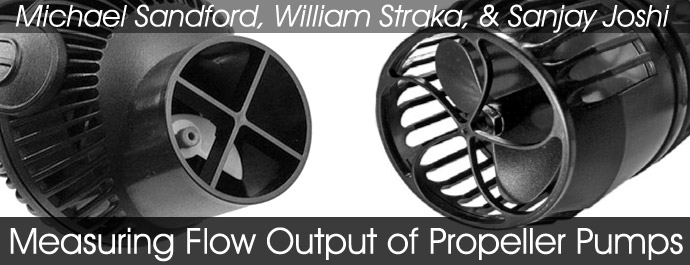
If you want, you can read our article from the time, “Tunze and Vortech…what is the real range of pumps? And how important is this really?” (Italian article) with all the data that came out of the study, but I can anticipate the results that we are interested in right now. The Hydor Koralia 5, 6, 7 and 8, had values that were most in line with the declared data. Even for the small Koralia 5, the measured value was significantly higher than the declared value.
Since we do not believe that Hydor has changed its measurement methodology, we are reasonably certain that the values claimed for this Koralia G3 are true.
It works with 15 mm thick glass
The Koralia G3 can be used on up to 15 mm thick glass. This expands the operational possibilities of this pump, and makes it suitable for most aquariums on the market. Large and small.
The attachment system to the glass is provided by the famous magneto suction cup. That is, the combination of a magnet and a suction cup. Bringing the best of both worlds. A very solid grip, the elimination of all vibration, and the ability to orient the pump in almost any direction. A system we have mentioned before that we like very much. Another very convenient thing is the ability to take the pump out of the water while leaving the magnets in place, so you don’t have to find the exact position to put it in every time.

If we considered its rated flow rate of 5,000 l/h we can say that it is a perfect pump for marine aquariums of soft corals, LPS hard corals and fish up to 500 liters. Knowing, however, that diffusers lower the flow rate, reduces that to aquariums up to a maximum volume of 350 liters. That is, a pair of pumps that have a flow rate equal to 10 times the volume. Hydor, again correctly, has given 330 liters as the maximum volume of a marine aquarium to be handled with these pumps. If we then wanted to use them in SPS hard coral aquarium the volume would be reduced to about 175/250 liters depending on the diffuser. Of course, we are talking about a pair of pumps used alternately.
Speaking of freshwater aquariums, those numbers can be increased again and brought up to the 600-liter threshold, due to the lower movement requirements that a freshwater aquarium has compared to a saltwater aquarium.
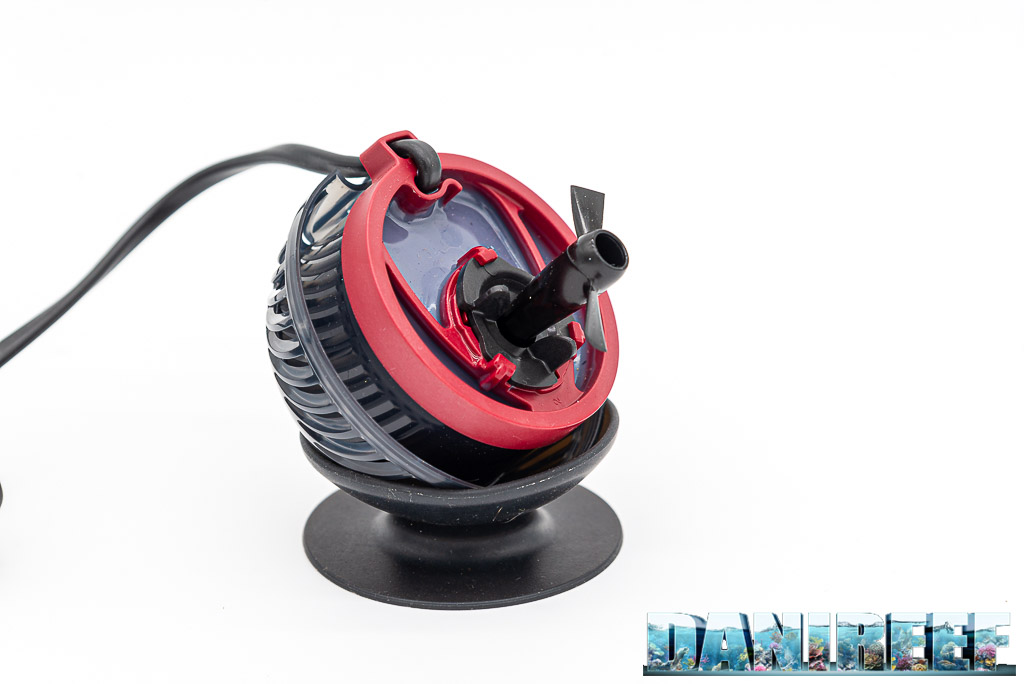
The pump impeller is a classic double-helix impeller, very small considering its size, with its shaft integrated in the pump body. Along the impeller is the retainer that allows solid anchoring to the pump. Assembly and disassembly of the pump are two very simple operations. Very easy to remove the pump from the water, thanks to the magneto suction cup, simple to remove the cap, and then very easy to provide for its maintenance.
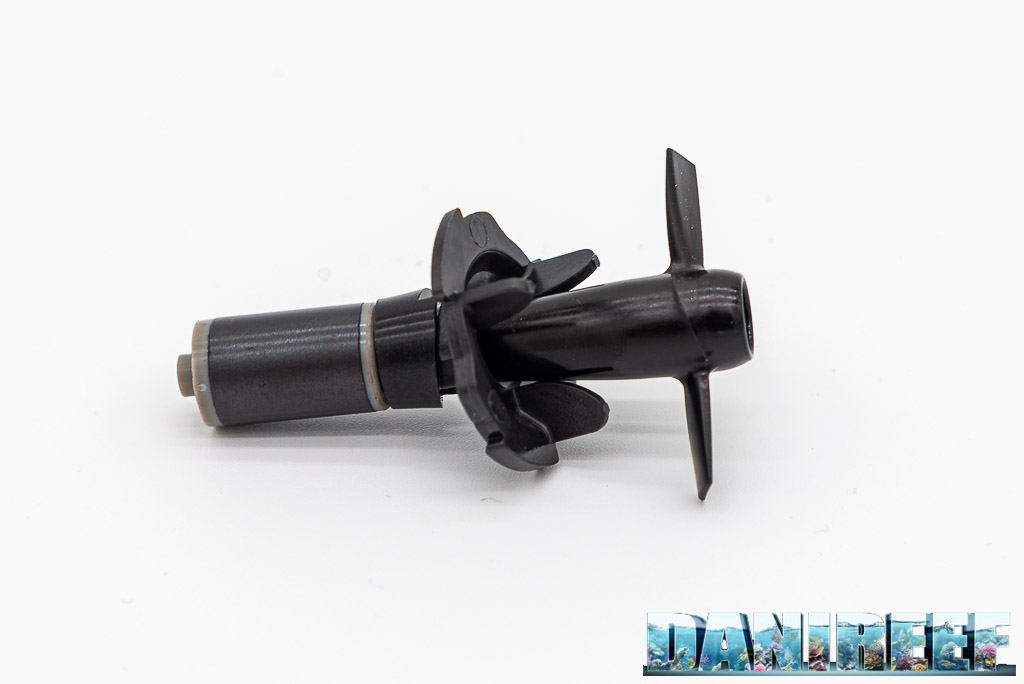
What about the noise?
Believe me when I say that this pump is inaudible. You can’t hear it at all. Absolutely silent. And this time we also have a contribution to show you, or if you prefer you can watch the video where we do the live measurement.

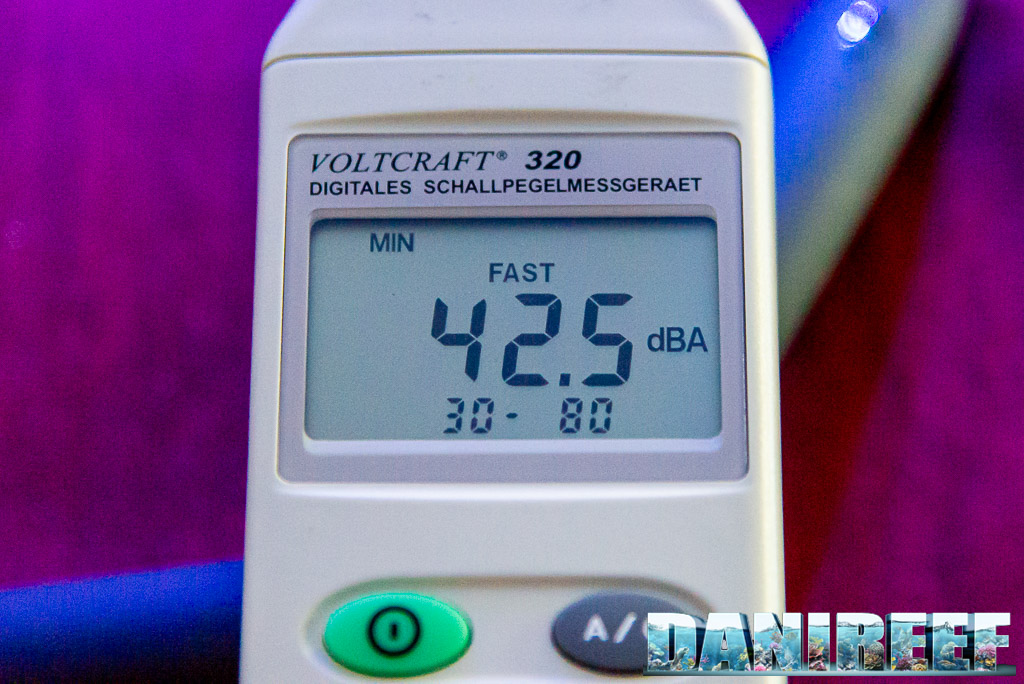
I don’t know if you noticed by watching the video or looking at the pictures above, but we detected less noise with the pump on than with the pump off. This is obviously not possible. But it is witness to the fact that the pump does not make noise at all, and that the noise generated by the environment is much greater than the noise made by the aquarium pump. Very good result for this Hydor Koralia G3.
To tell if the pump is working, you need to touch the electrical cord… or look at the flow of the aquarium.
Electricity consumption
We started with review of this pump stating that with only 3.5 watts it is possible to have a movement of about 5,000 l/h. A fantastic result. But of course, we proceeded to measure the consumption.
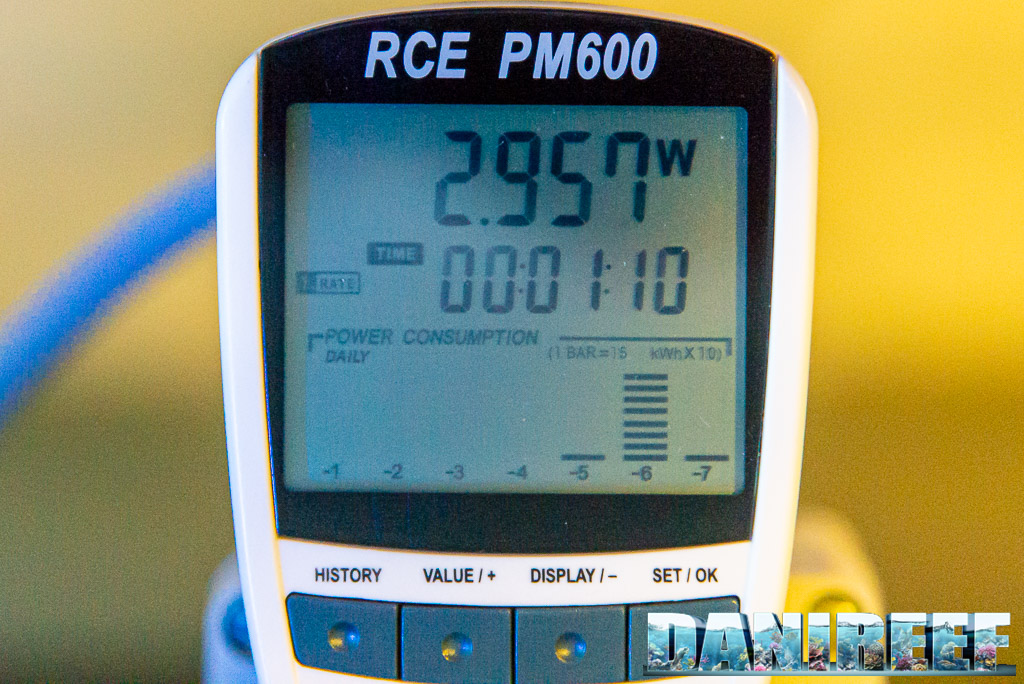
In fact, we measured a lower power consumption than stated. We were straddling 3 watts, even in the picture above we were below 3 watts. This would mean that a pair of these pumps, kept on alternately 24 hours a day, 365 days a year would have an electrical consumption of 26.28 kwh. And considering the energy cost of 0.27 euros per kwh, we would have an annual cost of 7 euros!!! Truly a pittance! A remarkable achievement for a hobby that tends to have high electricity costs.
Conclusion
If you have a marine or freshwater aquarium that needs movement, and at the same time you are not worried about having flow regulation, these are the pumps for you. Absolutely inaudible and with 5,000 liters of flow being generated by only 3 measured watts. What more can we ask for from a pump? The flow can be modulated using the supplied diffusers or grates, which make the flow even wider and gentler.
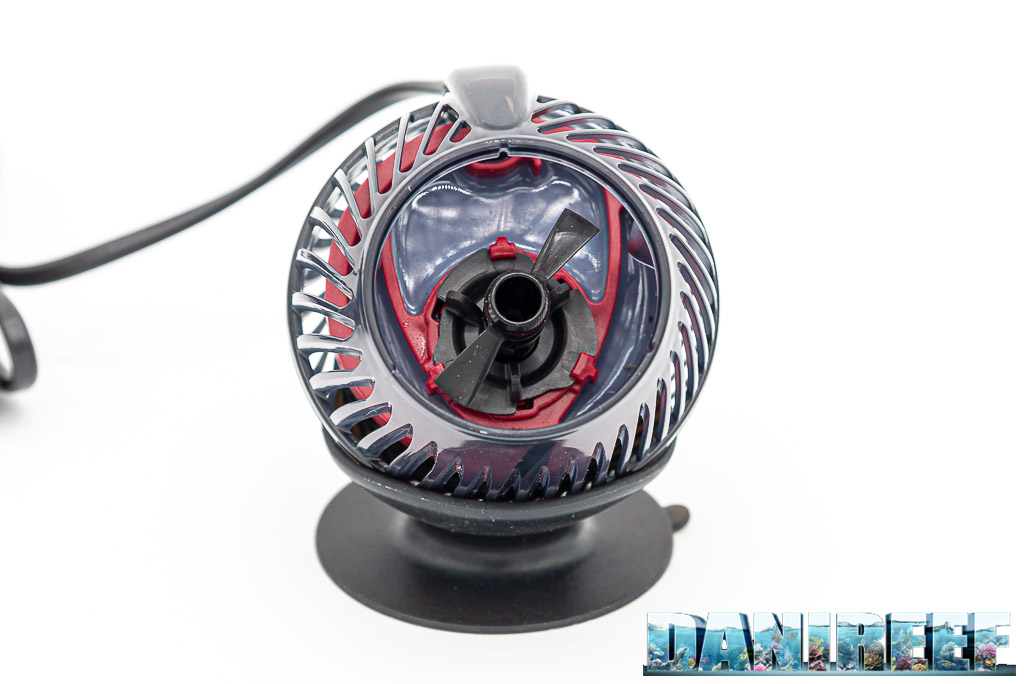
The only flaw is the price, because 89.90 euros ($95 USD) is certainly not low. Although online, like on Amazon, for example, you can find them at a much lower price. At this price, however, you can get a state-of-the-art pump with very low power consumption and total silence. Hard to do better.
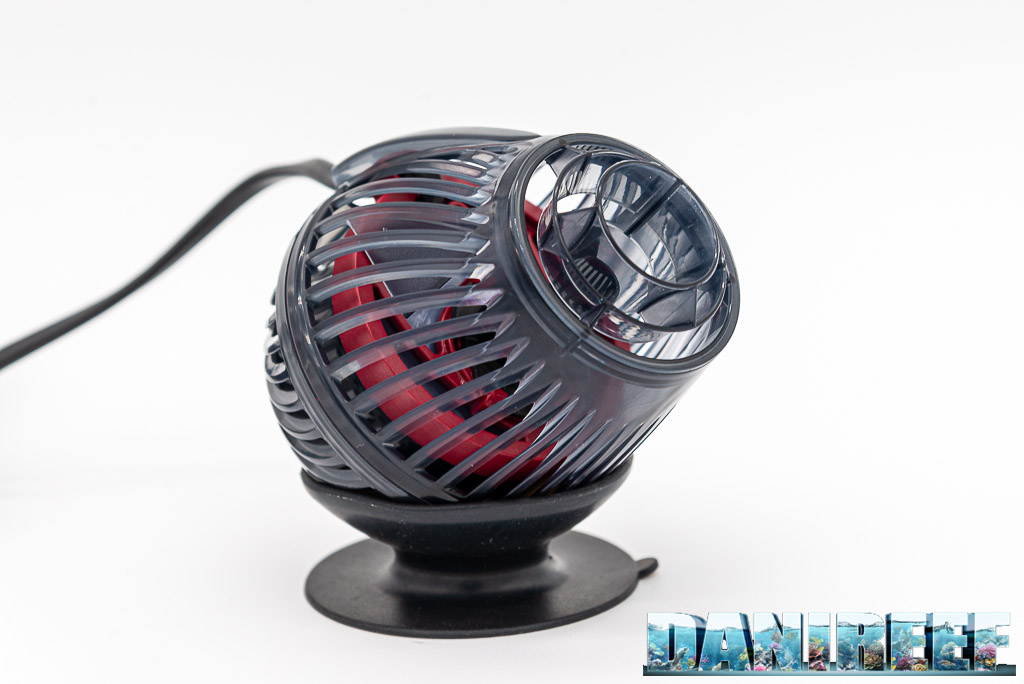

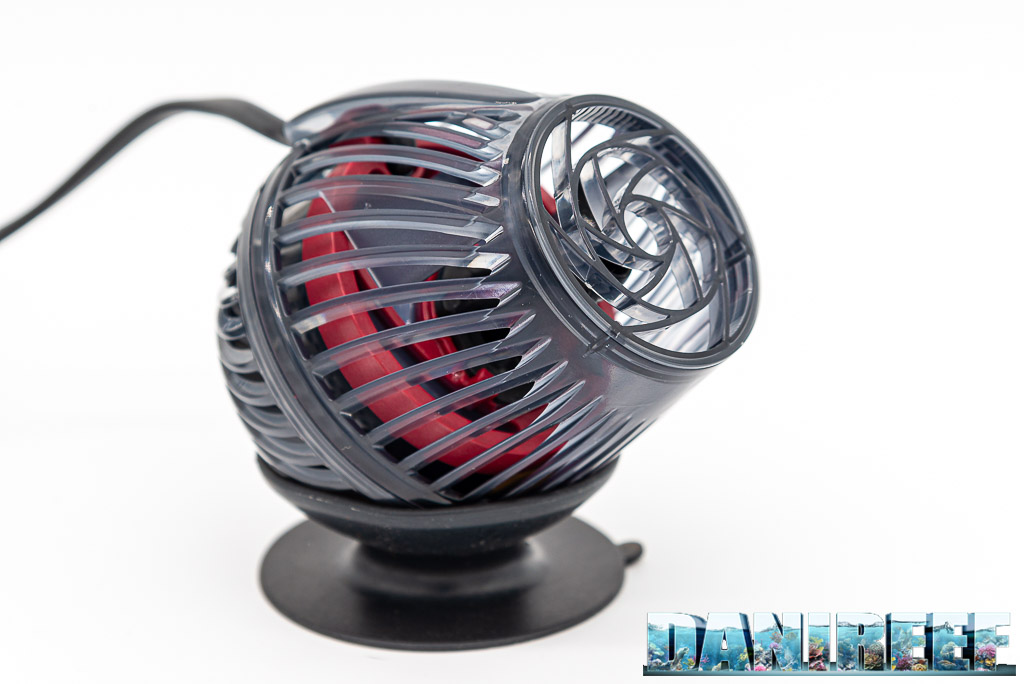
Finally, we leave you with a link to our guide on how to best place motion pumps: How to place motion pumps in a marine aquarium – guide (in Italian).
PRO
![]() Small size;
Small size; ![]() Simple and very practical magneto suction cup system;
Simple and very practical magneto suction cup system; ![]() Totally inaudible;
Totally inaudible;![]() Minimal power consumption;
Minimal power consumption;![]() Suitable for thicknesses up to 15 mm;
Suitable for thicknesses up to 15 mm;![]() Wide and gentle flow.
Wide and gentle flow.
AGAINST
![]() The price
The price
Disclaimer: We thank Hydor for providing us with the Koralia G3 pump for this review.










0 Comments